- Clone
- OKT3 (See other available formats)
- Workshop
- HCDM listed
- Other Names
- T3, CD3ε
- Isotype
- Mouse IgG2a, κ
- Ave. Rating
- Submit a Review
- Product Citations
- publications
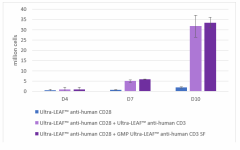
-

PBMC derived T cells were activated in the presence of Ulltra-LEAF™ anti-human CD28 antibody alone, or combined with Ultra-LEAF™ anti-human CD3 or GMP Ultra-LEAF™ anti-human CD3 SF for a period of 4 days. Activation was done via plate coating, with 1 µg/mL of each antibody. Cells were cultured for a total of 10 days, and viable cell number was determined.
| Cat # | Size | Price | Quantity Check Availability | Save | ||
|---|---|---|---|---|---|---|
| 317353 | 100 µg | $385 | ||||
| 317354 | 1 mg | $1980 | ||||
CD3ε is a 20 kD chain of the CD3/T cell receptor (TCR) complex, which is composed of two CD3ε, one CD3γ, one CD3δ, one CD3ζ (CD247), and a T cell receptor (α/β or γ/δ) heterodimer. It is found on all mature T lymphocytes, NK T cells, and some thymocytes. CD3, also known as T3, is a member of the immunoglobulin superfamily that plays a role in antigen recognition, signal transduction, and T cell activation.
Product DetailsProduct Details
- Reactivity
- Human
- Antibody Type
- Monoclonal
- Host Species
- Mouse
- Formulation
- 0.1 µm filtered in phosphate-buffered solution, pH 7.2, containing no preservative. Endotoxin level is < 0.01 EU/µg of the protein (< 0.001 ng/µg of the protein) as determined by the LAL test.
- Preparation
- The Ultra-LEAF™ (Low Endotoxin, Azide-Free) antibody was purified by affinity chromatography.
- Concentration
- 1.0 mg/mL
- Storage & Handling
- The antibody solution should be stored undiluted between 2°C and 8°C. This Ultra-LEAF™ solution contains no preservative; handle under aseptic conditions.
- Application
-
Activ
FC
Cell Culture - Recommended Usage
-
1 µg/mL of antibody antibody in PBS, for plate coating protocols; 10 µg/mL of OKT3 antibody for soluble antibody activation methods
- Application Notes
-
The OKT3 monoclonal antibody reacts with an epitope on the epsilon-subunit within the human CD3 complex.
Clone OKT3 can block the binding of clones SK7 and UCHT1.4 The OKT3 antibody is able to induce T cell activation. Additional reported applications (for the relevant formats) include: immunohistochemical staining of acetone-fixed frozen sections and activation of T cells. The LEAF™ purified antibody (Endotoxin <0.1 EU/µg, Azide-Free, 0.2 µm filtered) is recommended for functional assays (Cat. No. 317304). For highly sensitive assays, we recommend Ultra-LEAF™ purified antibody (Cat. No. 317326) with a lower endotoxin limit than standard LEAF™ purified antibodies (Endotoxin <0.01 EU/µg). - Additional Product Notes
-
This antibody is intended for activation and expansion of CD3 T cells in research and ex vivo cell culture applications. The antibody was GMP manufactured under serum-free conditions, including serum-free hybridoma cell culture, without additional animal or human-derived materials.
OKT3 antibody can be used in combination with anti-human CD28 antibodies to efficiently activate T cells when used at 1 µg/mL of antibody in PBS, for plate coating protocols. Plates should be coated for 2 hours in a tissue culture incubator, or overnight at 4°C. For soluble antibody activation protocols we recommend 10 µg/mL of OKT3 antibody and 5 µg/mL of anti-human CD28. -
Application References
(PubMed link indicates BioLegend citation) -
- Schlossman S, et al. Eds. 1995. Leucocyte Typing V. Oxford University Press. New York.
- Knapp W. 1989. Leucocyte Typing IV. Oxford University Press New York.
- Barclay N, et al. 1997. The Leucocyte Antigen Facts Book. Academic Press Inc. San Diego.
- Li B, et al. 2005. Immunology 116:487.
- Jeong HY, et al. 2008. J. Leuckocyte Biol. 83:755. PubMed
- Alter G, et al. 2008. J. Virol. 82:9668. PubMed
- Manevich-Mendelson E, et al. 2009. Blood 114:2344. PubMed
- Pinto JP, et al. 2010. Immunology. 130:217. PubMed
- Biggs MJ, et al. 2011. J. R. Soc. Interface. 8:1462. PubMed
- RRID
-
AB_2894461 (BioLegend Cat. No. 317353)
AB_2894461 (BioLegend Cat. No. 317354)
- Disclaimer
-
GMP Ultra-LEAF™ antibodies. BioLegend GMP Ultra-LEAF™ antibodies are manufactured in a dedicated GMP facility and compliant with ISO 13485:2016. For research or ex vivo cell processing use. Not for use in diagnostic or therapeutic procedures. Our processes include:
- Batch-to-batch consistency
- Material traceability
- Documented procedures
- Documented employee training
- Equipment maintenance and monitoring records
- Lot-specific certificates of analysis
- Quality audits per ISO 13485:2016
- QA review of released products
BioLegend GMP Ultra-LEAF™ antibodies are manufactured and tested in accordance with USP Chapter 1043, Ancillary Materials for Cell, Gene and Tissue-Engineered Products and Ph. Eur. Chapter 5.2.12
Antigen Details
- Structure
- Ig superfamily, the subunits CD3γ, CD3δ, CD3ζ (CD247) and TCR (α/β or γ/δ) form the CD3/TCR complex, 20 kD
- Distribution
-
Mature T and NK T cells, thymocyte differentiation
- Function
- Antigen recognition, signal transduction, T cell activation
- Ligand/Receptor
- Peptide antigen bound to MHC
- Cell Type
- NKT cells, T cells, Thymocytes, Tregs
- Biology Area
- Immunology
- Molecular Family
- CD Molecules
- Antigen References
-
- Barclay N, et al. 1993. The Leucocyte FactsBook. Academic Press. San Diego.
- Beverly P, et al. 1981. Eur. J. Immunol. 11:329.
- Lanier L, et al. 1986. J. Immunol. 137:2501.
- Gene ID
- 916 View all products for this Gene ID
- UniProt
- View information about CD3 on UniProt.org
Other Formats
View All CD3 Reagents Request Custom ConjugationCustomers Also Purchased
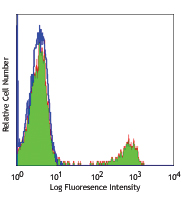
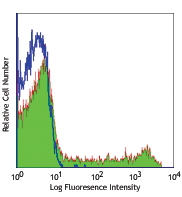
Compare Data Across All Formats
This data display is provided for general comparisons between formats.
Your actual data may vary due to variations in samples, target cells, instruments and their settings, staining conditions, and other factors.
If you need assistance with selecting the best format contact our expert technical support team.
-
Purified anti-human CD3
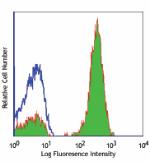
Human peripheral blood lymphocytes stained with purified OKT... -
FITC anti-human CD3
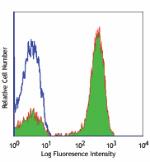
Human peripheral blood lymphocytes stained with OKT3 FITC -
PE anti-human CD3
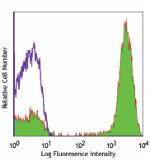
Human peripheral blood lymphocytes stained with OKT3 PE 
Human peripheral blood was stained with CD3 (clone OKT3) PE ... -
Alexa Fluor® 488 anti-human CD3
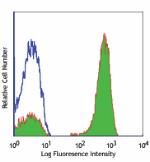
Human peripheral blood lymphocytes stained with OKT3 Alexa F... -
Alexa Fluor® 647 anti-human CD3
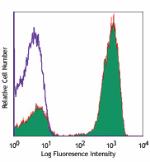
Human peripheral blood lymphocytes stained with OKT3 Alexa F... -
Pacific Blue™ anti-human CD3
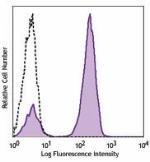
Human peripheral blood lymphocytes were stained with CD3 (cl... -
APC anti-human CD3
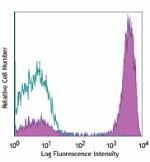
Human peripheral blood lymphocytes stained with OKT3 APC -
Biotin anti-human CD3
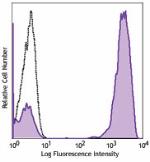
Human peripheral lymphocytes were stained with biotinylated ... -
Brilliant Violet 605™ anti-human CD3

Human peripheral lymphocytes were stained with CD3 (clone OK... -
Brilliant Violet 650™ anti-human CD3
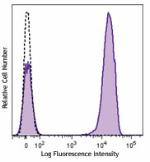
Human peripheral lymphocytes were stained with CD3 (clone OK... -
Ultra-LEAF™ Purified anti-human CD3

Human peripheral blood lymphocytes stained with LEAF™ purifi... -
Brilliant Violet 711™ anti-human CD3
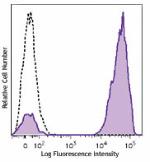
Human peripheral lymphocytes were stained with CD3 (clone OK... -
Brilliant Violet 785™ anti-human CD3
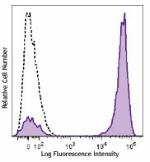
Human peripheral lymphocytes were stained with CD3 (clone OK... -
Brilliant Violet 510™ anti-human CD3

Human peripheral blood lymphocytes were stained with CD3 (cl... -
PE/Cyanine7 anti-human CD3
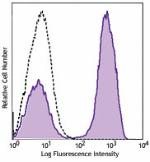
Human peripheral blood lymphocytes were stained with CD3 (cl... -
PerCP/Cyanine5.5 anti-human CD3

Human peripheral blood lymphocytes were stained with CD3 (cl... -
PerCP anti-human CD3
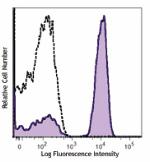
Human peripheral blood lymphocytes were stained with CD3 (cl... -
Alexa Fluor® 700 anti-human CD3
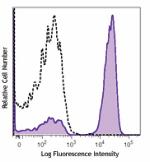
Human peripheral blood lymphocytes were stained with CD3 (cl... -
APC/Cyanine7 anti-human CD3

Human peripheral blood lymphocytes were stained with CD20 FI... -
Brilliant Violet 421™ anti-human CD3
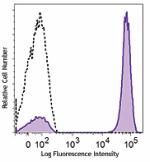
Human peripheral blood lymphocytes were stained with CD3 (cl... -
PE/Dazzle™ 594 anti-human CD3
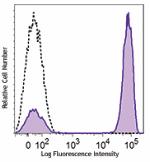
Human peripheral blood lymphocytes were stained with CD3 (cl... -
APC/Fire™ 750 anti-human CD3

Human peripheral blood lymphocytes were stained with CD20 FI... -
GMP Ultra-LEAF™ Purified anti-human CD3 SF

PBMC derived T cells were activated in the presence of Ulltr... -
PE/Cyanine5 anti-human CD3 Antibody

Human peripheral blood lymphocytes were stained with CD20 (c... -
GMP Ultra-LEAF™ Biotin anti-human CD3 SF

Human peripheral lymphocytes were stained with GMP Ultra-LEA... 
PBMC-derived T cells were activated in the presence of GMP U... -
Spark UV™ 387 anti-human CD3

Human peripheral blood lymphocytes were stained with anti-hu... -
Spark Red™ 718 anti-human CD3

Human peripheral blood lymphocytes were stained with anti-hu... -
TotalSeq™-A1289 anti-human CD3
-
TotalSeq™-B1289 anti-human CD3
-
TotalSeq™-C1289 anti-human CD3
 Login/Register
Login/Register 






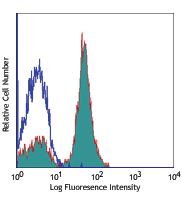
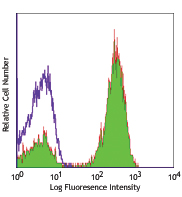



Follow Us